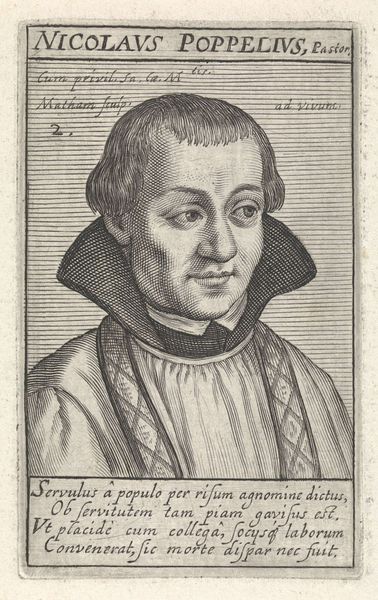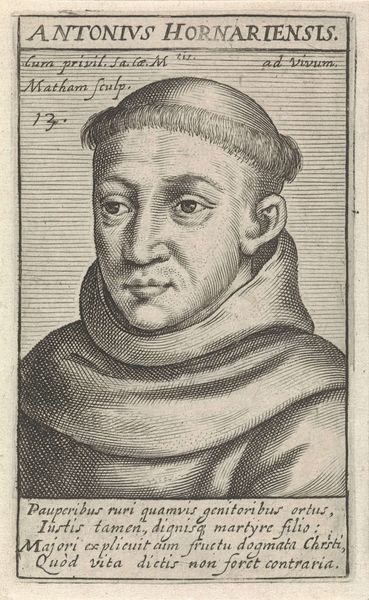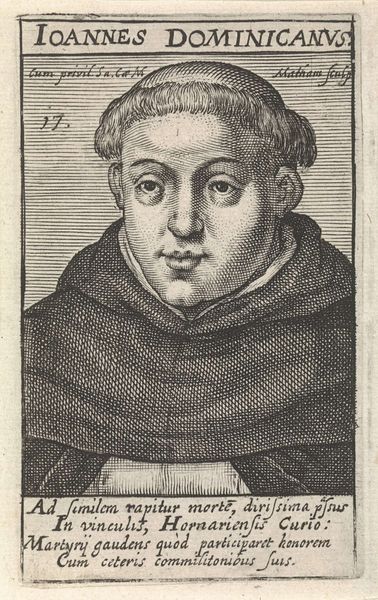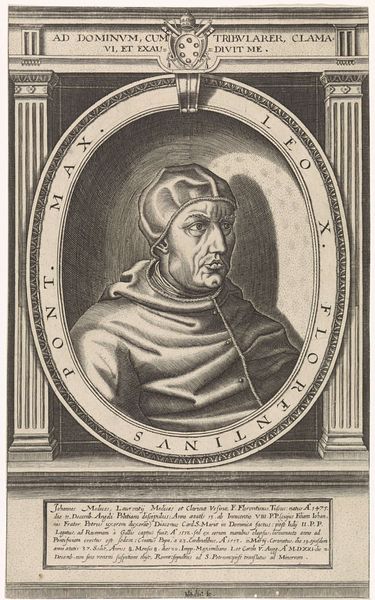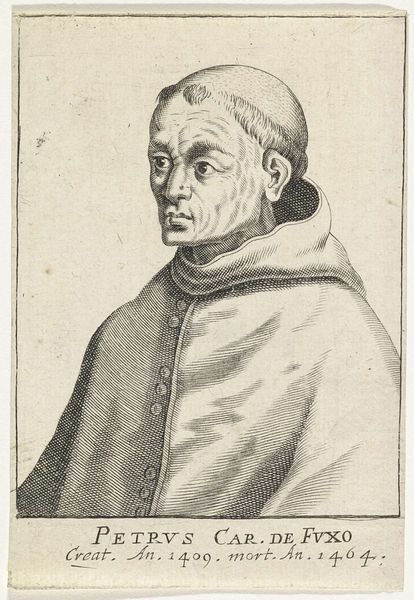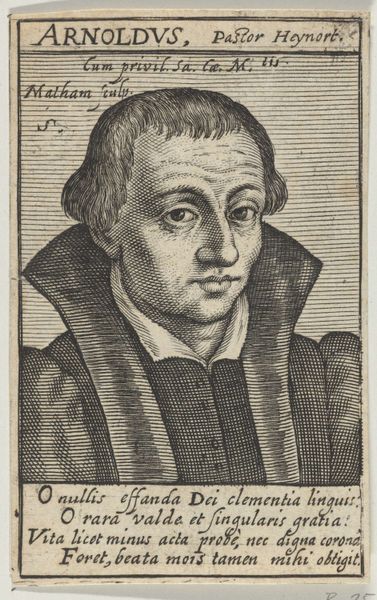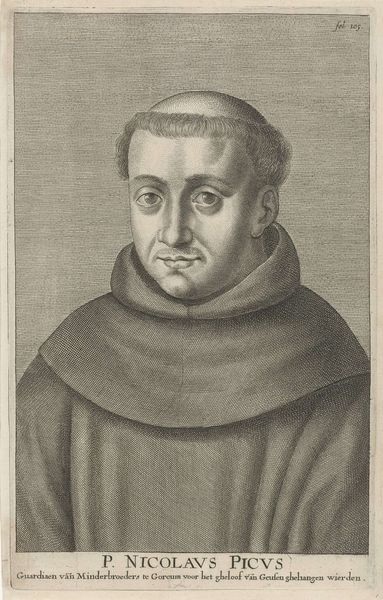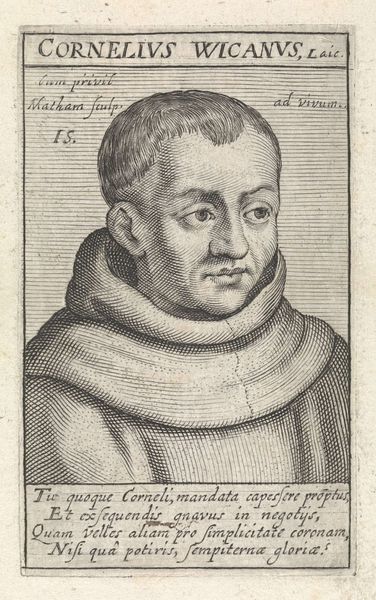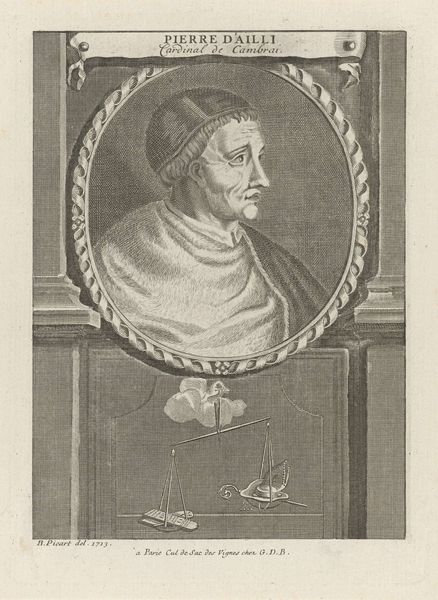
print, engraving
#
portrait
#
baroque
# print
#
figuration
#
form
#
portrait reference
#
line
#
portrait drawing
#
engraving
Dimensions: height 98 mm, width 59 mm
Copyright: Rijks Museum: Open Domain
Editor: So here we have Jacob Matham’s 1617-1618 engraving, “Portret van H. Godfried van Duynen,” held at the Rijksmuseum. It feels quite austere, almost like a photographic negative in its stark contrast. What stands out to you? Curator: Well, as a materialist, I see the immense labor embedded in this print. Consider the process: Matham, with incredible skill, meticulously cuts lines into a metal plate. This isn't just about depicting van Duynen, it's about the societal value placed on reproductive printmaking, and its role in disseminating images and ideas at that time. The ‘cum privil. sa. ca. m.’ indicates a privilege granted—a form of copyright that protected the printmaker's investment in this labor. Who benefitted, and how? Editor: So you’re saying it’s not *just* a portrait; it's about the political and economic context surrounding its creation? I hadn’t really considered the business side. Curator: Precisely. The “ad vivum” suggests it’s drawn from life, making Matham’s role closer to transcription. We see the influence of his hand, in his interpretation of volume with linear hatching, but his ability to make an accurate representation enhances van Duynen’s, and by proxy Matham's, authority. It circulated ideas and reinforced hierarchies. Now look closely - What tools did he likely use to produce this image, and who taught him? Editor: Hmm, thinking about the materials, he probably used burins and engraving tools…and of course ink, and a printing press. The inscription is fascinating too. I'd love to learn more about the social function of prints like these. Curator: Absolutely. We need to look past simple representation, seeing art production, distribution, and consumption, not as isolated events but as integrated within larger cultural and social systems. Editor: Right, I think I understand more of that now, how prints themselves became commodities that circulated to affirm class status and reinforce societal expectations. Thanks for pointing that out!
Comments
No comments
Be the first to comment and join the conversation on the ultimate creative platform.
